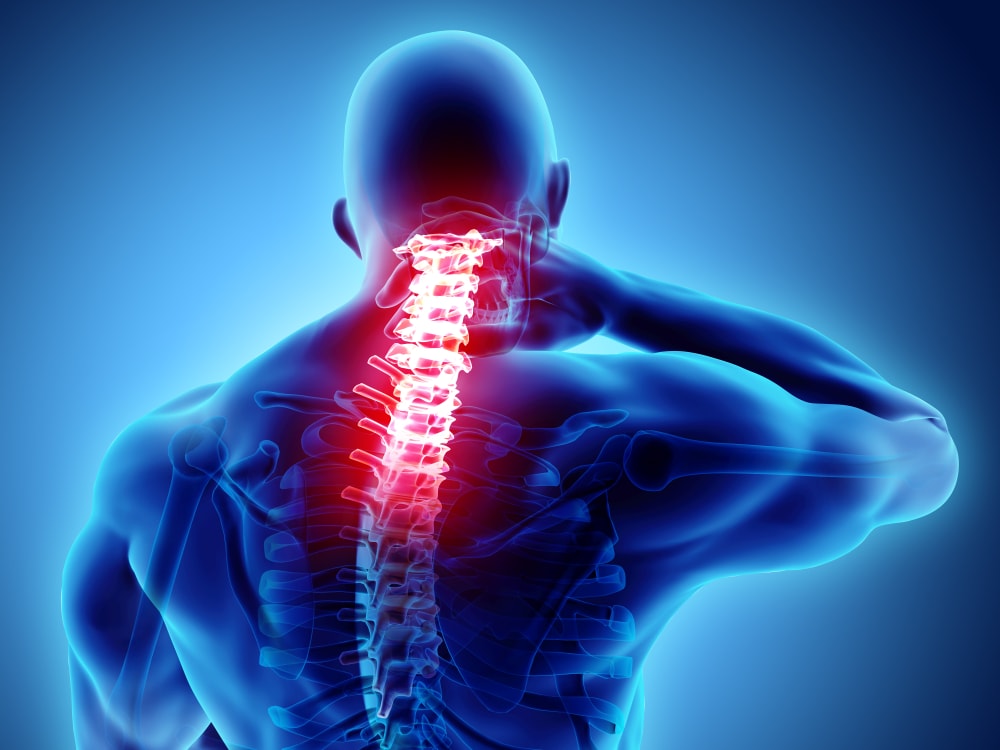Neck pain is a common complaint, yet there are many different reasons why people may experience this issue. A high-quality assessment is essential to correctly classify neck pain and ensure the most effective treatment is provided. A physiotherapist is well suited to manage neck pain and this article will provide a brief overview of the assessment, classification, and treatment process.
The most important component of the assessment is ruling out any serious medical conditions that may present with neck pain. For instance, a heart attack may present with both chest and neck pain while meningitis, a severe infection, presents with fever and a stiff neck. If you suspect either of these conditions you should seek immediate medical care. Physiotherapists are trained to identify and appropriately refer to other health care providers if any of these conditions are identified.

Treatment of Neck Pain
After ruling out red flags, the neck pain is most likely to have a mechanical (musculoskeletal) cause and can be classified and treated by a physiotherapist. Following the most recent guidelines, neck pain is often classified into four categories depending on the primary issues associated with the pain.
Classification of Neck Pain
Category one is neck pain with mobility deficits, which essentially means stiff neck pain or being unable to move well through the full range of motion. Patients often report that moving their neck in a specific direction reproduces their pain. This category also includes computer posture-related conditions that present with neck and shoulder pain and back and neck muscle pain. As stiffness is the primary issue, treatment initially focuses on regaining movement in your neck, shoulders, and back. Once the stiffness is improved, the next step is strengthening all the muscles so they can best support the neck, back, and shoulders to maintain better posture.
Category two is neck pain with movement coordination impairments, also known as whiplash or neck strain. This category of neck pain largely occurs after traumas such as falls or motor vehicle accidents. During the trauma, the neck undergoes a significant amount of mechanical stress and normally stable structures like joints often become looser. The muscles are also disrupted and respond by becoming tight and weak. Initially, treatment focuses on managing the pain post-injury, then progresses to a gradual strengthening program. Not only do the muscles have to become stronger, but they also have to re-learn how to contract smoothly.
The last two categories are neck pain with headache and neck pain with radiating arm pain. Both of these categories are less common and require a more in-depth assessment. While there are many types of headaches, if the headache is unilateral, non-pulsating, and associated with neck pain then it may be due to dysfunction in the upper segments of the neck. Treatment focuses on ensuring proper movement and strength through the involved segments.
For neck pain with radiating arm pain, these patients often have tingling and numbness that runs down the arm past the elbow. In this category, the arm pain is actually due to nerve dysfunction occurring in the neck and the arm pain can typically be increased or decreased depending on neck movements and postures. Treatment focuses on reducing the irritability of the nerve and addressing the underlying cause of the nerve dysfunction.
Overall, while neck injuries can be frustrating, a physiotherapist can guide patients through the injury, from diagnosis to return to activity, and ensure the best possible care is provided throughout the process. For individualized assessment and treatment of neck pain, visit any nearby Panther Sports Medicine Physiotherapy clinic.





